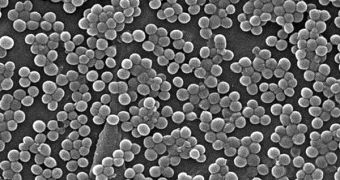Two new devices, created by German scientists at the Max Planck Institute for Extraterrestrial Physics, and Japan-based ADTEC Plasma Technology Ltd., show tremendous promise in fighting methicillin-resistant Staphylococcus Aureus (MRSA), as well as other resilient bacteria. The two instruments are low-temperature plasma prototypes, which have demonstrated in tests that they can pose a real challenge to these microorganisms, which have remained unchecked until now. The find is made all the more important by the fact that these bacteria spread mostly in hospitals, where people are most likely to have a weakened immune system. In severe cases, these infections are lethal.
The finds are detailed in two new separate papers, in a selection of publications on Plasma Medicine, which appear in the Thursday, November 26 issue of the New Journal of Physics. Plasma, the main “active” component in the new approach, is oftentimes said to be a fourth state of matter, in addition to the solid, liquid and gas ones. It can be best defined by its unique trait, namely that of being highly ionized. Most types of plasma only form at super-high temperatures, equivalent to those found inside stars, during nuclear fusion. However, room-temperature variations of the matter exist, and they can apparently be used to fight pathogens at the nanoscale and microscale.
This is not the first time plasma is being employed in the field of medicine. Some hospitals already use it for the sterilization of surgical instruments, because the material has the ability to make all tools sterile. This amazing ability is drawn from the fact that plasma acts at the atomic level, which means that it can penetrate all recesses that exist at the nanoscale even in the most seemingly flawless materials. One of the two new devices has been constructed especially to deal with skin disinfections, and its creators say that it can do its job within a few seconds, killing all antibiotic-resistant bacteria it meets. These microorganisms account for 37,000 yearly deaths in EU countries alone.
The second device is described by its manufacturers as an “argon plasma torch” and was especially designed to handle the microbiological challenges of chronic, non-healing wounds. Because the instrument allows for the densities of biologically active agents to be finely tuned, the plasma it controls is able to kill everything in the wound except for the healthy human cells that are needed for the healing process. “One can treat plasmas like a medical cocktail, which contains new and established agents that can be applied at the molecular level to cells in prescribed intensities and overall doses,” the Max Planck team writes in the two papers.

 14 DAY TRIAL //
14 DAY TRIAL //